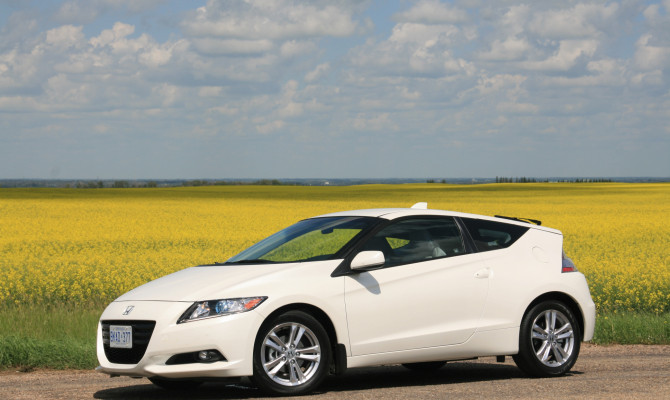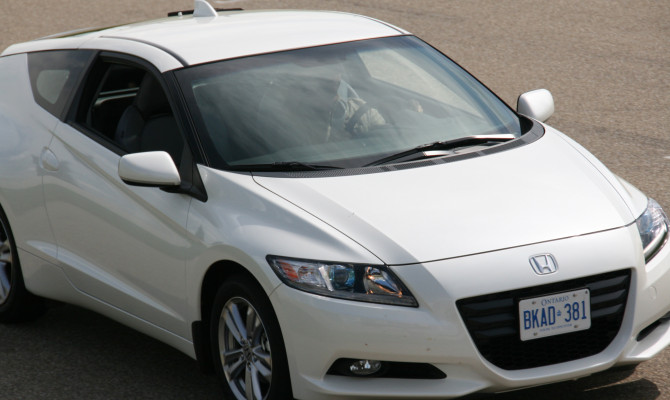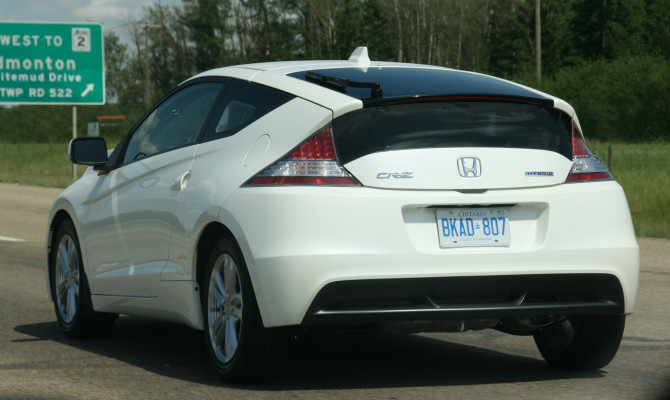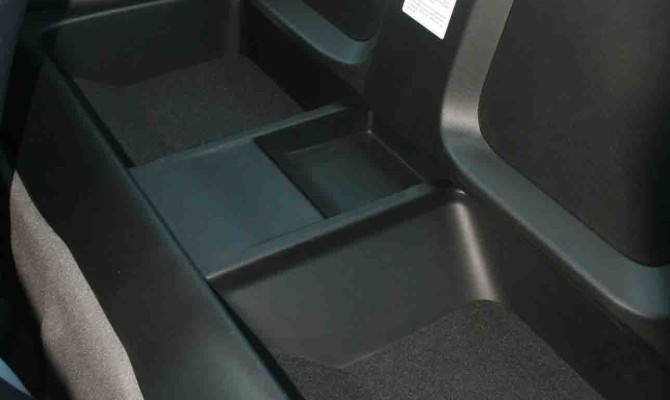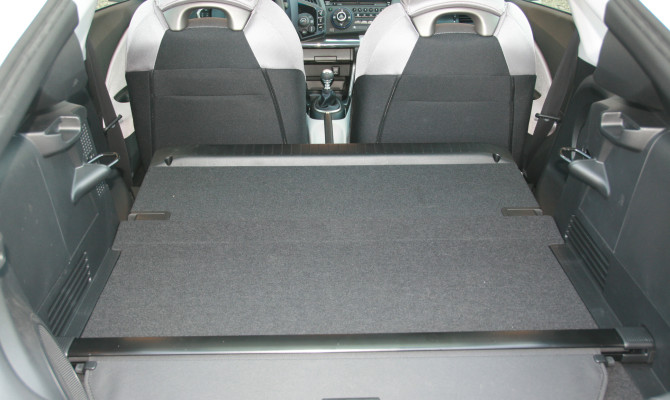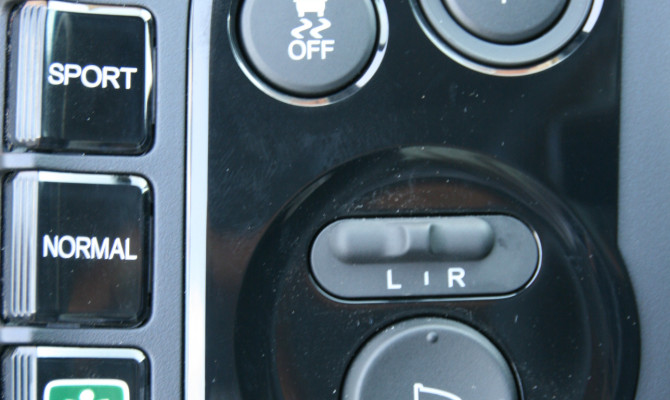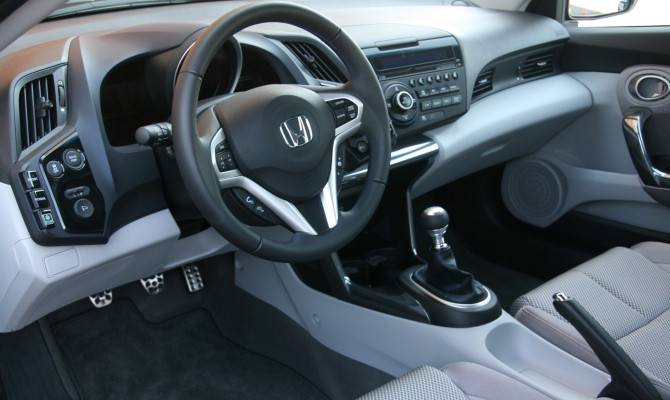Honda introduced the world’s first hot-hybrid-hatch with the launch of its CR-Z for the 2011 model year.
The CR-Z is a stylish, driver-focused, small two-seat hatchback that’s fun-to-drive, and it offers great fuel economy. It’s a contemporary take on an older (last sold in 1991) and much loved pocket-rocket called the Honda CRX.
Reliability has been outstanding and the CR-Z’s resale value on the used market is above average, a nice bonus for owners. It is based on a chassis shared with the Honda Fit, an undeniably more practical (with seats for four-to-five) vehicle option that lacks the style and sporty appeal of the CR-Z.
Under its wedge-like aerodynamic design is a lightweight yet rigid structure. Its tapering roofline leads to an abrupt tail end with a double-window rear hatch. While the secondary lower glass panel does provide a driver some addition rear vision, overall rearward sightlines are still a drawback. The suspension is also on the firm side and combined with its short wheelbase uneven road surfaces can make the ride choppy.
The sport theme continues on the inside with bucket-style seats that offer more side support on both the seatback and cushion. It also comes with large storage bins in the rear (instead of seats) that are covered by a drop-down cargo area divider when expanded trunk space is needed.
Under hood, there is a 1.5-litre i-VTEC four-cylinder gas engine that’s teamed with Honda’s compact (10-kilowatt) Integrated Motor Assist (IMA) system to provide a maximum of 122 horsepower @ 6000 rpm. It’s essentially the same (mild-hybrid) drive system that’s also used in the Honda Insight and Honda Civic Hybrid. City/ highway fuel economy (with auto) is rated at 5.6/5.0 L/100km.
The CR-Z, however, does offer two unique hybrid-drive differences. A six-speed manual transmission option being the first and a three-mode operational feature, which allows a driver to choose between Sport, Normal or Econ (Economy) driving styles, the second.
The automatic option is a CVT (Continuously Variable Transmission) with steering wheel-mounted paddle shifters that provide seven-speed sequential gear-ratio control. The sport mode has to be selected to use the paddle shifters, but it’s an impressively quick acting feature that’s fun to use.
The Econ mode “smoothes” throttle inputs but will still kick down the transmission and give full throttle if the driver floors the gas pedal. It also dampens steering response, air conditioning use and activates the idle stop/start feature sooner, which is a big fuel saver in stop-and-go city driving. Normal mode is a middle-blend of the Sport and Econ modes.
No significant changes were made to CR-Z for the 2012 model year, other than vehicles with a red exterior could be ordered with black seat fabric. The 2013 CR-Z did get a few updates, including a more powerful battery pack, a standard reverse camera and Bluetooth. It was also offered in a Premium trim edition.
A Honda legend returns with a modern twist, the Honda CR-Z offers agile handling and a more engaging driving experience than previously available in a small hybrid vehicle.
Price Check: 2011 – 2013 Honda CR-Z (February 2014)
Year Edition Expect to Pay Today
2011 Base (auto) $15,000 to $18,000
2012 Base (auto) $17,000 to $20,000
2013 Base (auto) $19,000 to $23,000
Prices vary depending on a used vehicle’s condition, mileage, usage and history. A complete mechanical check should always be performed by a reliable auto technician prior to purchase.
Safety Recalls: 2011 to 2013 Honda CR-Z:
2011: In vehicles equipped with a manual transmission, specific operating conditions (such as extreme temperatures, combined with high battery and accessory loads, and operation near engine stalling speeds), could allow the Engine Control Unit (ECU) to activate the engine’s stall prevention assist software. This might inadvertently command the hybrid system’s electric motor to rotate the engine in the opposite direction and cause the vehicle to move in a reverse direction than expected. Dealers will update the ECU software.
Recent Comments
- { Enjoyed your Forest of Bowland in the BMW X5M, particularly the photo of the BMW in front of the main part of Stonyhurst College where... }
- { Bantam designed the Jeep, not Willy's or Ford. The American military gave the original Bantam prototype to Willys and Ford to copy. There is plenty... }
- { All Escalades come with a 6.2-lilter V8 engine that produces 420 horsepower. A six-speed automatic is the only transmission offered and drives the rear wheels.... }
- { Alexandra is an excellent journalist. }
Popular Posts
- Journey to a ‘Sparkling’ Luxury Okanagan Resort “Four lucky readers will put a Dodge Journey’s weekend-...
- The Need For Speed: Hike Those Highway Limits More than half of those polled believe the province sho...
- Drives-U-Crazy… Erratic drivers. An early morning drive from Kelowna to Vancouver is nor...
- Readers Respond: The Pros and Cons of Increasing B.C. Speed Limits Increasing the speed limits will only increase risk to...
- Honda CR-V Review: The Compact Crossover To Get Things Done The CRV is a very stylish and aerodynamic crossover veh...


